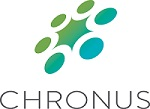ATD Blog
Mentoring Programs Won’t Forward DEI Without Intention
Mon Mar 29 2021

Following through on a New Year’s resolution. Achieving a milestone your customers rave about. Creating a culture where all employees feel valued. What do these things have in common?
The power of intention.
More leaders are working to harness diversity, equity, and inclusion (DEI) at their organizations. One powerful way of doing so is through mentoring programs—in fact, it’s a key initiative looked for when DiversityInc builds its Top 50 Companies for Diversity list every year. But many programs operating today are missing the opportunity to better engage and advance underrepresented employees.
Why? Intention.
The Barrier That Informal Mentoring Presents
The lack of intention and structure within informal mentoring presents a hurdle for DEI strategies. According to Harvard Business Review, “While white males tend to find mentors through their own social networks and can benefit from an informal structure, minorities and women are less likely to get a mentor through an informal program.” People often engage people who look or act like themselves in these informal relationships, which can leave underrepresented employees disengaged. In fact, informal mentoring programs can even unintentionally exclude people if there’s no formal intention, design, or organized recruitment to the mentoring efforts.
Signs of a Careless Mentoring Program
This doesn’t mean that just because a mentoring program is formal it is immune to missteps. Here are three ways to spot careless formal mentoring programs.
They lack purpose. They do not have a designated goal to work toward. They also often don’t have a connection back to an overall DEI strategy or culture change in the organization.
They lack accountability. Without a structure for mentors and mentees to follow, they often fail to achieve their goals, if they set any at all.
They lack impact. Without measures of success or benchmarks to indicate a program is impactful, they don’t know what’s working and what’s not.
How to Build an Intentionally Inclusive Mentoring Program
Skip the guessing game and false starts. Here are four best practices for how to build inclusive mentoring through intention.
State Your Intention
It sounds easy enough, yet too many programs begin without stating what is to be achieved. When it’s stated what the program should do, specifically related to DEI goals, the program will:
Increase representation of black employees in managerial positions.
Advance Latinas in engineering roles in the organization.
Help recruit more employees of color by 2022.
By outlining your intentions, your employees will be clear about what the mentoring program is aiming to do and approach participation with that in mind.
Recruit Intentionally
Expecting employees from underrepresented backgrounds just to “show up” for mentoring won’t cut it. Sometimes, there can be barriers—implicit or explicit—to them applying for the program. Instead, approach and invite participants to the program. Articulate what they can expect to gain from participating.
Train Intentionally
Mentoring shouldn’t just be a casual networking opportunity, especially if participants have not been in a mentoring program before. Equip participants with a structure that establishes expectations on meeting frequency, goal setting, and communication preferences. Prepare mentors and mentees for the possibility that important topics such as gender or racial bias or discrimination may emerge. Give them the necessary tools to have these sensitive conversations. Participants should feel empowered to discuss their lived experiences and problem-solve accordingly.
Measure Intentionally
Collect data on your program. This can include how many participants are regularly connecting, the number of underrepresented employees participating, whether mentors and mentees feel supported, and their perception of the effectiveness of the program. You’ll also want to look at metrics regarding retention, advancement, and engagement of participants versus nonparticipants. Being able to communicate the achievements of the program will help create evangelists, recruit future participants, and garner continued resources and support.
An intentional, formal mentoring program has the potential to create greater DEI within an organization. Mentors walk away knowing their time was used to make change, mentees benefit from advancing and growing within the organization, and the organization builds a more diverse and inclusive workplace culture.

